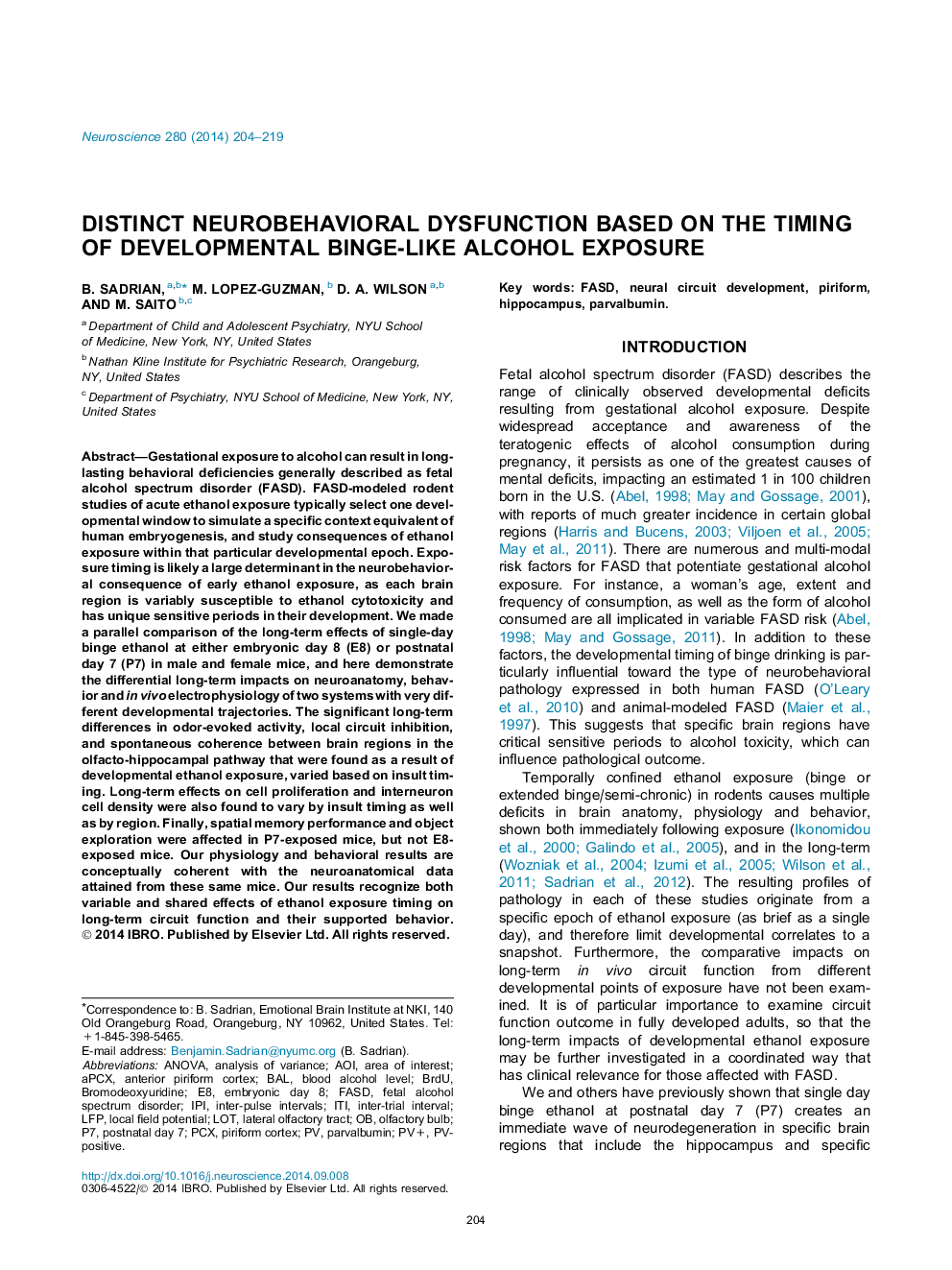| Article ID | Journal | Published Year | Pages | File Type |
|---|---|---|---|---|
| 6273337 | Neuroscience | 2014 | 16 Pages |
â¢Early alcohol exposure timing creates variable long-term outcomes in mice.â¢Adult olfacto-hippocampal circuit function varies based on age of alcohol exposure.â¢Early alcohol exposure reduces interneuron number in the adult piriform and hippocampus.â¢Long-term neurogenesis declines in the dentate gyrus after P7 exposure, not E8.â¢P7, but not E8, alcohol exposure induces adult spatial memory deficits.
Gestational exposure to alcohol can result in long-lasting behavioral deficiencies generally described as fetal alcohol spectrum disorder (FASD). FASD-modeled rodent studies of acute ethanol exposure typically select one developmental window to simulate a specific context equivalent of human embryogenesis, and study consequences of ethanol exposure within that particular developmental epoch. Exposure timing is likely a large determinant in the neurobehavioral consequence of early ethanol exposure, as each brain region is variably susceptible to ethanol cytotoxicity and has unique sensitive periods in their development. We made a parallel comparison of the long-term effects of single-day binge ethanol at either embryonic day 8 (E8) or postnatal day 7 (P7) in male and female mice, and here demonstrate the differential long-term impacts on neuroanatomy, behavior and in vivo electrophysiology of two systems with very different developmental trajectories. The significant long-term differences in odor-evoked activity, local circuit inhibition, and spontaneous coherence between brain regions in the olfacto-hippocampal pathway that were found as a result of developmental ethanol exposure, varied based on insult timing. Long-term effects on cell proliferation and interneuron cell density were also found to vary by insult timing as well as by region. Finally, spatial memory performance and object exploration were affected in P7-exposed mice, but not E8-exposed mice. Our physiology and behavioral results are conceptually coherent with the neuroanatomical data attained from these same mice. Our results recognize both variable and shared effects of ethanol exposure timing on long-term circuit function and their supported behavior.
